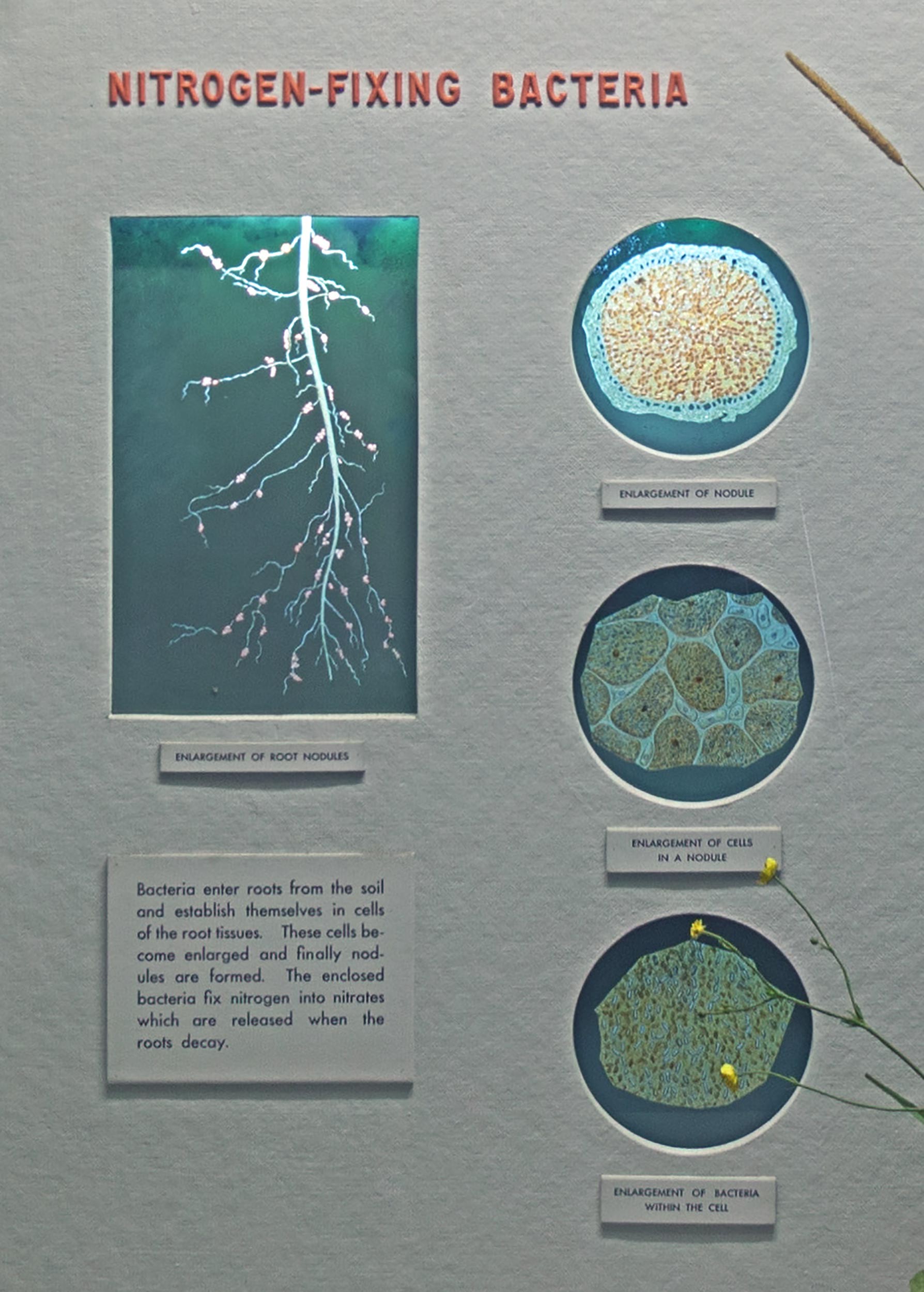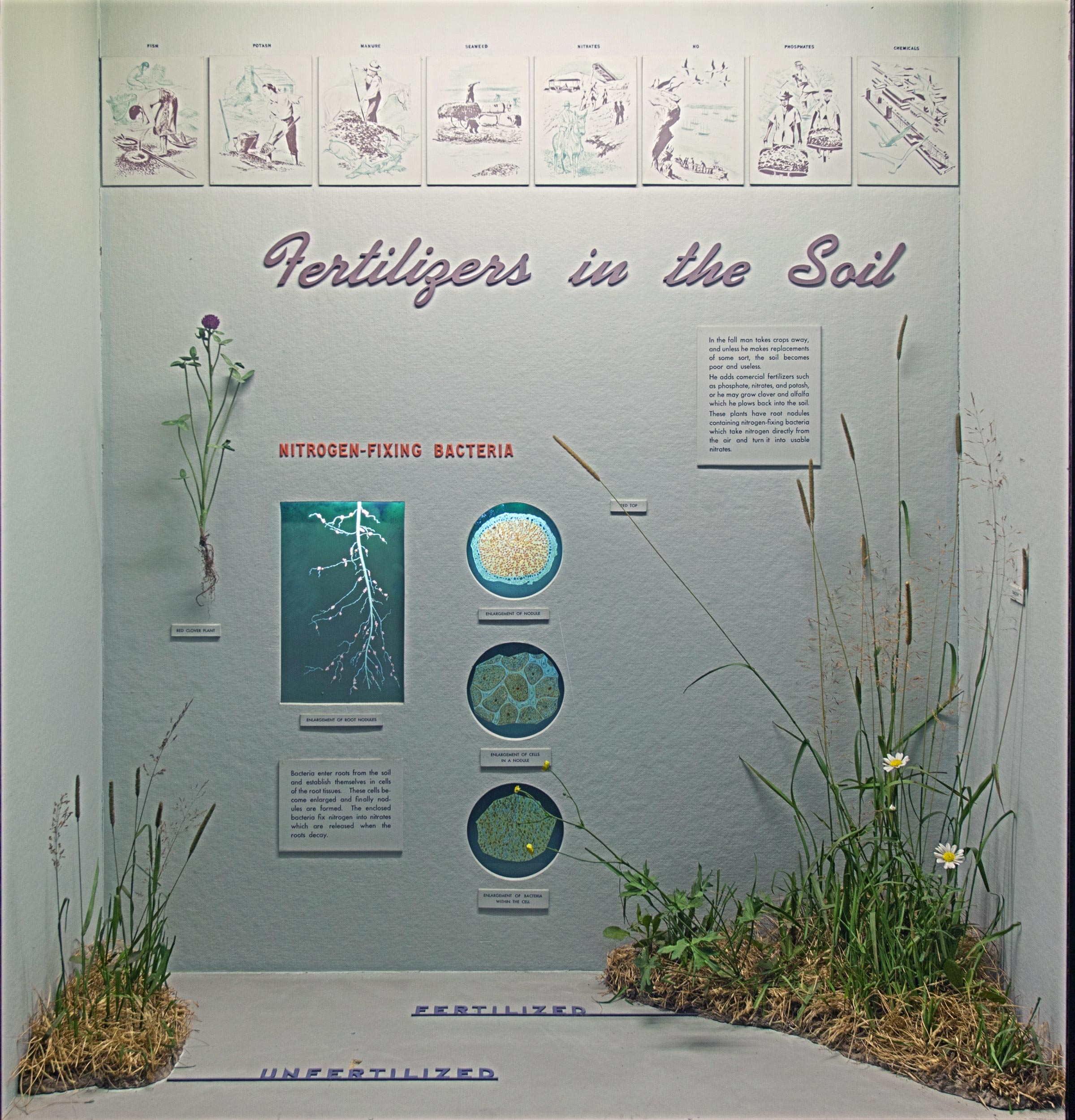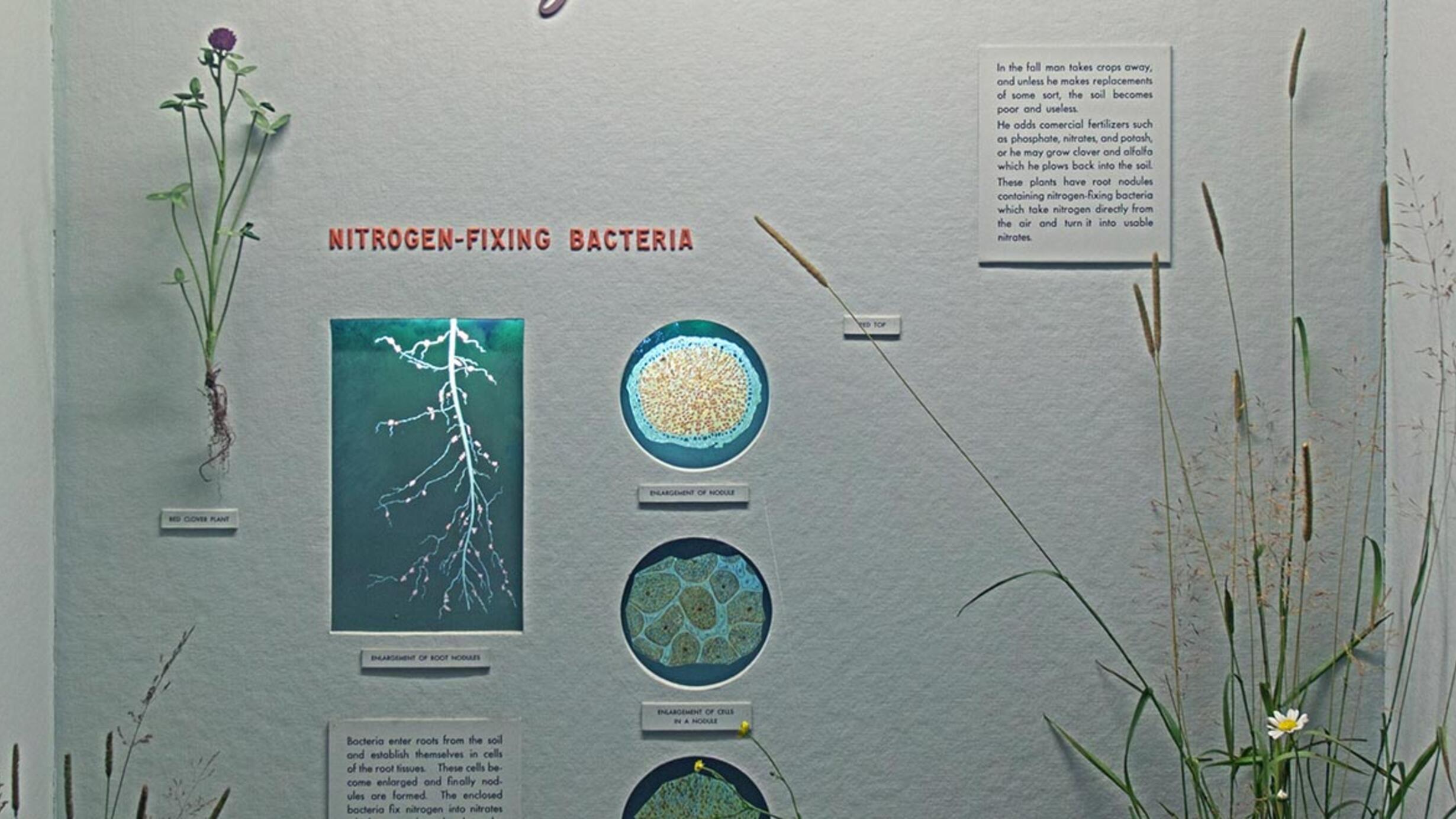Nitrogen-fixing Bacteria
(Top-left rectangle) Enlargement of root nodules
(Top circle) Enlargement of cells in a nodule
(Middle circle) Enlargement of bacteria within the cell
(Bottom circle) Red top

Main text fertilizers in the soil
In the fall man takes crops away, and unless he makes replacements of some sort, the soil becomes poor and useless.
He adds commercial fertilizers such as phosphate, nitrates, and potash, or he may grow clover and alfalfa which he plows back into the soil.
These plants have root nodules containing nitrogen-fixing bacteria which take nitrogen directly from the air and turn it into usable nitrates.
Fertilizers in the Soil
Part of Hall of New York State Environment.

